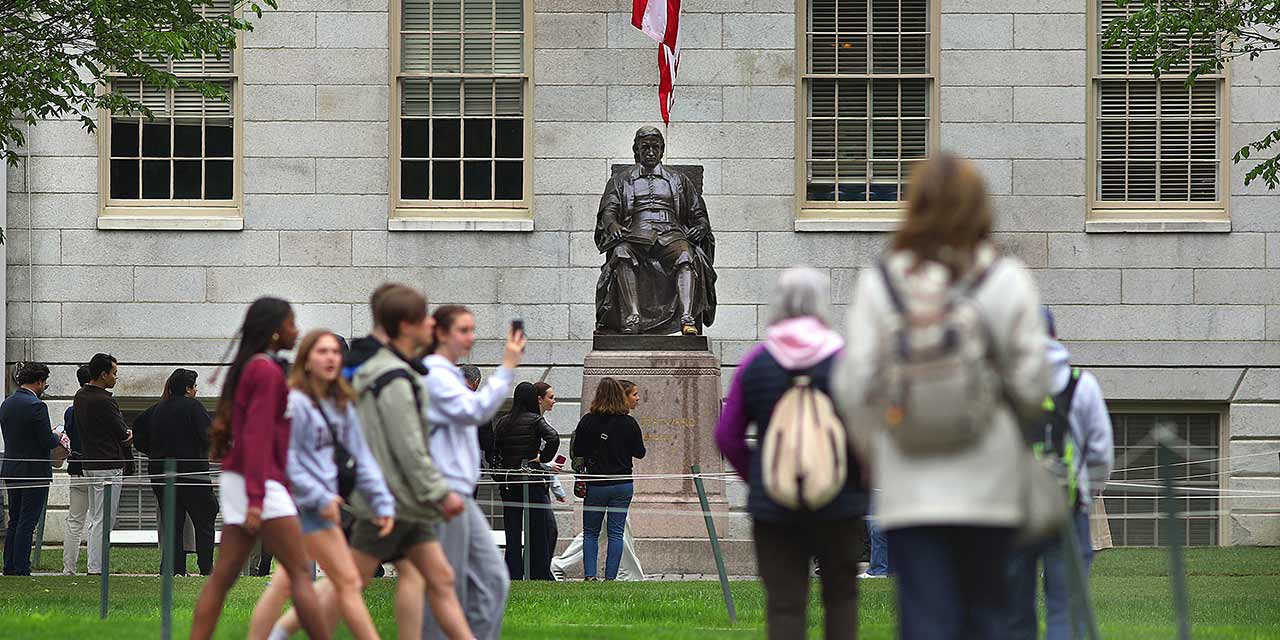
Faced with a $2.2 billion cut in federal funding—including $110 million from the National Institutes of Health, potentially jeopardizing the university’s scientific research—Harvard may ultimately submit to the Trump administration’s demands. On the other hand, with an endowment larger than the GDP of more than 120 nations, and a demonstrated willingness to challenge the president in court, Harvard apparently prefers to fight, at least for now.
Still, whatever losses Harvard is willing to accept will fundamentally change the calculus for current and prospective employees. Until about a month ago, Harvard and its peer universities were considered stable and prestigious employers, on the cutting edge of scientific and medical research. They’re not such predictable places to work anymore. Can they remain at the forefront of any field if they no longer enjoy access to the federal dollars they have long relied upon? Many scientists are asking this question.
Finally, a reason to check your email.
Sign up for our free newsletter today.
A plausible argument says that this instability could lead to brain drain—in the best case, to allied nations, or in the worst case, to China. Another possibility: talent stays in America but distributes more evenly, moving from more-woke to less-woke universities, and from blue states to red.
We’ve seen this scenario play out among humanities Ph.D. graduates for decades. Given the dearth of tenure-track positions and private-sector exit options for humanities Ph.D.s, even graduates of the most elite programs for years have had to take post-doctoral fellowships and teaching jobs wherever they can find them. A 2022 Nature study found that 80 percent of all faculty in America were trained at just 20 percent of universities, and humanities Ph.D.s (as compared with those in other disciplines) were the most likely to work at an institution significantly less prestigious than the one from which they graduated. Given that most prestigious institutions are in blue states, it’s likely that humanities departments in red states are frequently able to poach blue-state Ph.D.s.
But science programs in red states could begin to catch up in their recruitment of elite faculty—especially if the federal funding once funneled to Harvard or Columbia gets redirected to state universities like those in Tennessee or Florida, or even less ideologically corrupted private universities like Notre Dame, Dartmouth, and Vanderbilt.
American talent might also abandon academia for industry. During the 2010s biotech boom, which centered on Boston, increasing numbers of Ph.D.-holding biomedical scientists flocked to industry for its higher pay and more immediate practical applications. This trend began to reverse in 2022, when the biotech industry hit a slump driven by declining interest in medical research after Covid, and by outsourcing to China and India by firms that sought to escape Boston’s high costs of living and red tape.
With medical and pharmaceutical companies already expanding into states like Texas and Tennessee, a newly minted Ph.D. graduate or M.D. researcher from Harvard or Columbia might also find red-state employment more stable—and red-state living more appealing.
We’re already seeing a general exodus from blue states to red. In 2023, nine out of the ten states that lost the most residents were blue or purple, and nine out of the ten that gained the most residents were red. High taxes, expensive housing, anti-business regulations, crime, ideological extremism, and sclerotic governance have plagued blue-state residents since before Covid but became unbearable for many in the pandemic’s aftermath.
Blue states still retain significant research advantages, such as economies of scale necessary for laboratory science. But starting a business or living affordably in an area with good schools is becoming much easier to achieve in Texas than in Massachusetts—and this advantage may eventually enable Texas to build comparable institutions.
Harvard and other elite institutions may soon find that their prestige must be backed by something tangible. If they have no federal money for scientific research and can’t use endowment funds to patch up the hole, they will lose ground in the research areas that once made them great.
Blue-state institutions therefore face a choice. They can use the Trump administration’s wake-up call as an opportunity to rethink their failed ideology, or they can continue to cling to these ideas. If they persist in that approach, they may struggle to reclaim their former strength, and their increasingly empty labs will stay empty.
Trump’s destabilization of our ideologically captured elite universities doesn’t mean that America is doomed to losing its research footing. If anything, it means we finally have a chance to reinvent how we do research, spread opportunity more evenly throughout the country, and force institutions in blue states to return to sanity—or risk sliding into irrelevance.
Photo by John Tlumacki/The Boston Globe via Getty Images
City Journal is a publication of the Manhattan Institute for Policy Research (MI), a leading free-market think tank. Are you interested in supporting the magazine? As a 501(c)(3) nonprofit, donations in support of MI and City Journal are fully tax-deductible as provided by law (EIN #13-2912529).
Source link















